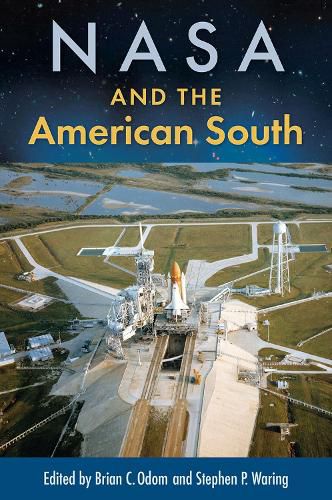Readings Newsletter
Become a Readings Member to make your shopping experience even easier.
Sign in or sign up for free!
You’re not far away from qualifying for FREE standard shipping within Australia
You’ve qualified for FREE standard shipping within Australia
The cart is loading…






This title is printed to order. This book may have been self-published. If so, we cannot guarantee the quality of the content. In the main most books will have gone through the editing process however some may not. We therefore suggest that you be aware of this before ordering this book. If in doubt check either the author or publisher’s details as we are unable to accept any returns unless they are faulty. Please contact us if you have any questions.
An unprecedented examination of NASA's strong ties to the American South, exploring how the space program and the region have influenced each other over 60 years
During the Cold War, federal funding for the space program transformed the southern United States as NASA built most of its major new facilities in the region and invested heavily in Project Apollo. This volume examines the economic, social, political, and cultural impacts of NASA on the South since the space program was founded in 1958 and explores how the program's strong relationship to the region has affected NASA's organizational culture, technological development, and programmatic goals.Featuring contributions by scholars from a range of backgrounds, including space historians as well as specialists in many other fields, NASA and the American South offers perspectives on how NASA provided a springboard for the complete restructuring of communities that were home to its facilities in Alabama, Florida, Mississippi, New Orleans, and Texas. These changes unsettled previous patterns of life, and the chapters in this volume include assessments of NASA's influence on regional development, tourism, art and architecture, religion, and Black institutions of higher education.
Bridging the gap between the history of technology and its geographical and cultural contexts, this book offers an unprecedented reevaluation of the impact of the space program on its surrounding landscape, introducing a new framework for interpreting the agency's legacy.
$9.00 standard shipping within Australia
FREE standard shipping within Australia for orders over $100.00
Express & International shipping calculated at checkout
This title is printed to order. This book may have been self-published. If so, we cannot guarantee the quality of the content. In the main most books will have gone through the editing process however some may not. We therefore suggest that you be aware of this before ordering this book. If in doubt check either the author or publisher’s details as we are unable to accept any returns unless they are faulty. Please contact us if you have any questions.
An unprecedented examination of NASA's strong ties to the American South, exploring how the space program and the region have influenced each other over 60 years
During the Cold War, federal funding for the space program transformed the southern United States as NASA built most of its major new facilities in the region and invested heavily in Project Apollo. This volume examines the economic, social, political, and cultural impacts of NASA on the South since the space program was founded in 1958 and explores how the program's strong relationship to the region has affected NASA's organizational culture, technological development, and programmatic goals.Featuring contributions by scholars from a range of backgrounds, including space historians as well as specialists in many other fields, NASA and the American South offers perspectives on how NASA provided a springboard for the complete restructuring of communities that were home to its facilities in Alabama, Florida, Mississippi, New Orleans, and Texas. These changes unsettled previous patterns of life, and the chapters in this volume include assessments of NASA's influence on regional development, tourism, art and architecture, religion, and Black institutions of higher education.
Bridging the gap between the history of technology and its geographical and cultural contexts, this book offers an unprecedented reevaluation of the impact of the space program on its surrounding landscape, introducing a new framework for interpreting the agency's legacy.